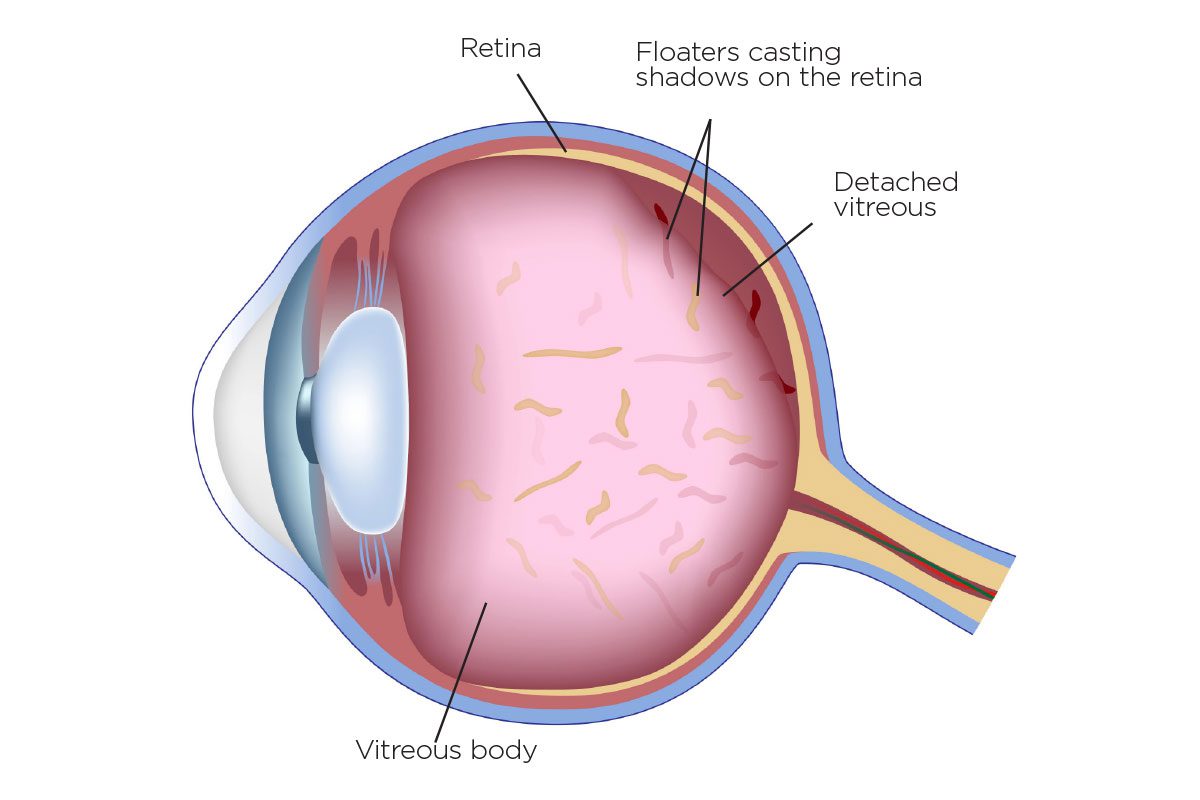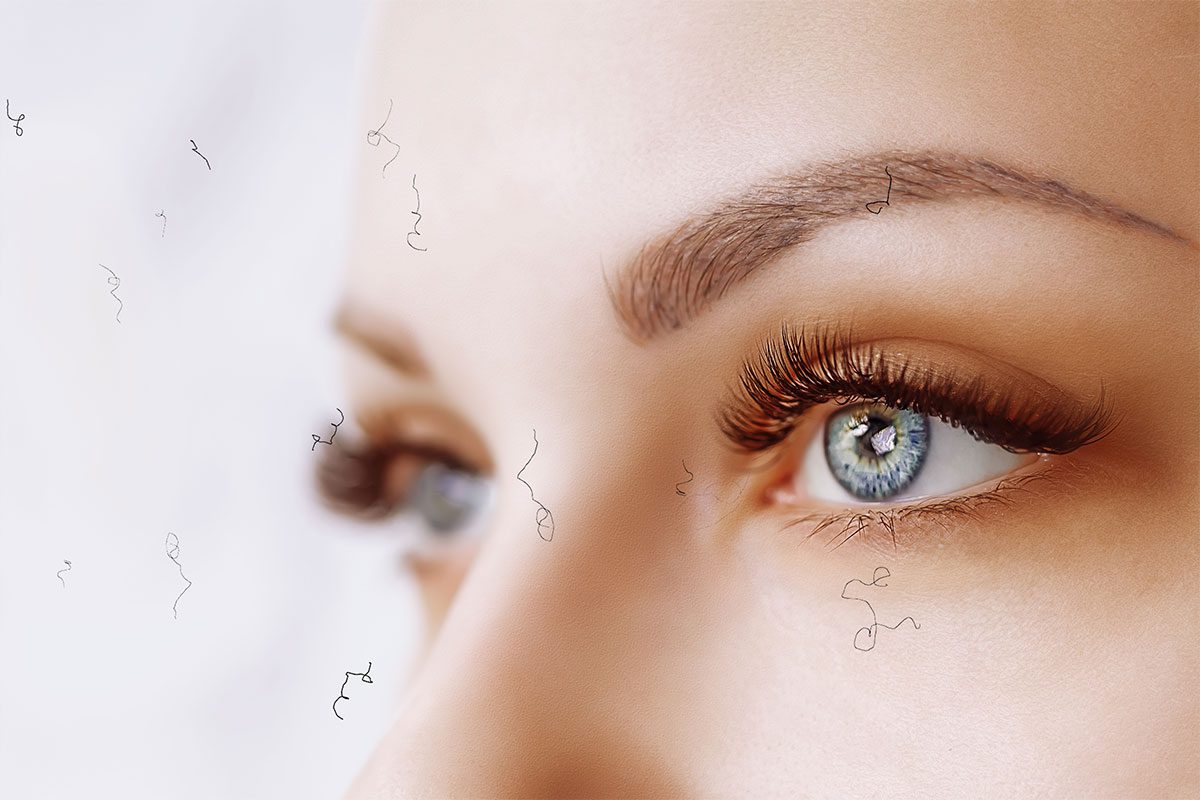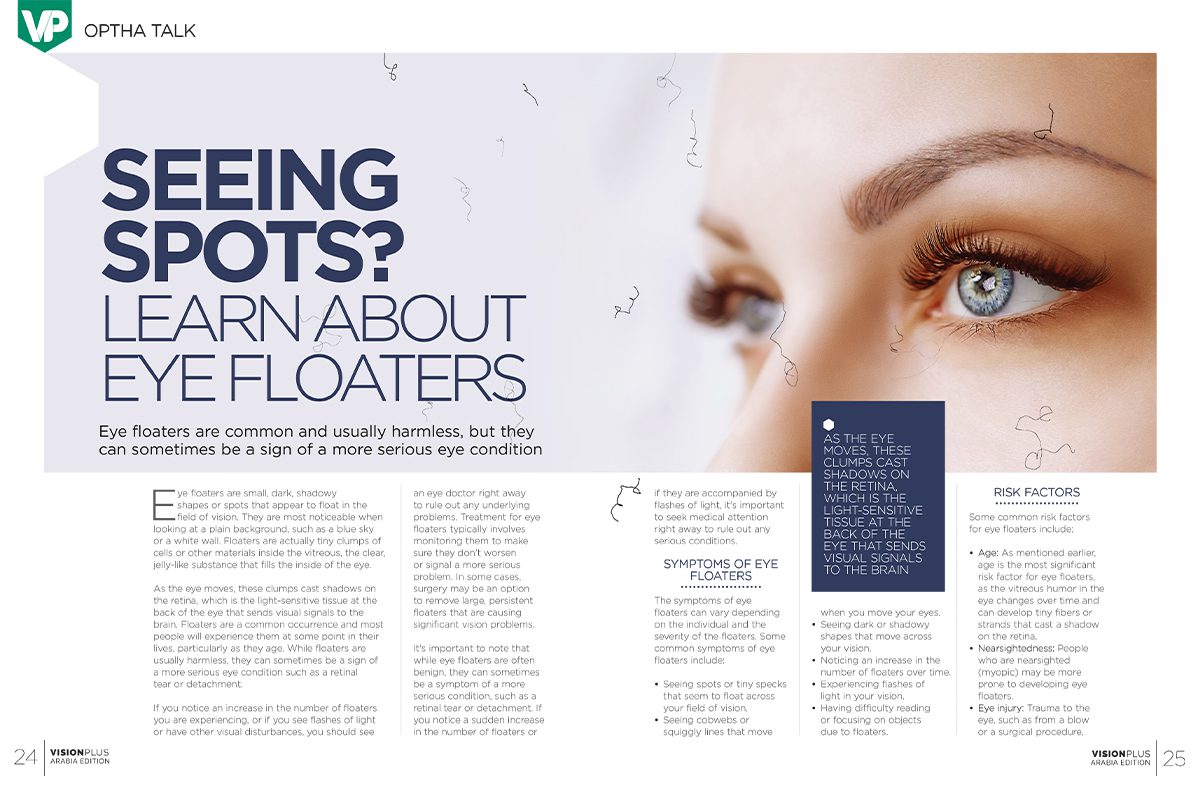This post is also available in:
![]() العربية
العربية

Seeing Spots? Learn About Eye Floaters
Eye floaters are common and usually harmless, but they can sometimes be a sign of a more serious eye condition
Eye floaters are small, dark, shadowy shapes or spots that appear to float in the field of vision. They are most noticeable when looking at a plain background, such as a blue sky or a white wall. Floaters are actually tiny clumps of cells or other materials inside the vitreous, the clear, jelly-like substance that fills the inside of the eye.
As the eye moves, these clumps cast shadows on the retina, which is the light-sensitive tissue at the back of the eye that sends visual signals to the brain. Floaters are a common occurrence and most people will experience them at some point in their lives, particularly as they age. While floaters are usually harmless, they can sometimes be a sign of a more serious eye condition such as a retinal tear or detachment.
If you notice an increase in the number of floaters you are experiencing, or if you see flashes of light or have other visual disturbances, you should see an eye doctor right away to rule out any underlying problems. Treatment for eye floaters typically involves monitoring them to make sure they don't worsen or signal a more serious problem. In some cases, surgery may be an option to remove large, persistent floaters that are causing significant vision problems.
It's important to note that while eye floaters are often benign, they can sometimes be a symptom of a more serious condition, such as a retinal tear or detachment. If you notice a sudden increase in the number of floaters or if they are accompanied by flashes of light, it's important to seek medical attention right away to rule out any serious conditions.

Symptoms of eye floaters
The symptoms of eye floaters can vary depending on the individual and the severity of the floaters. Some common symptoms of eye floaters include:
- Seeing spots or tiny specks that seem to float across your field of vision.
- Seeing cobwebs or squiggly lines that move when you move your eyes.
- Seeing dark or shadowy shapes that move across your vision.
- Noticing an increase in the number of floaters over time.
- Experiencing flashes of light in your vision.
- Having difficulty reading or focusing on objects due to floaters.
Risk Factors
Some common risk factors for eye floaters include:
- Age: As mentioned earlier, age is the most significant risk factor for eye floaters, as the vitreous humor in the eye changes over time and can develop tiny fibers or strands that cast a shadow on the retina.
- Nearsightedness: People who are nearsighted (myopic) may be more prone to developing eye floaters.
- Eye injury: Trauma to the eye, such as from a blow or a surgical procedure, can increase the risk of developing floaters.
- Eye inflammation: Inflammation of the eye, which can be caused by infections, autoimmune disorders, or other conditions, may increase the risk.
- Certain health conditions: People with certain health conditions, such as diabetes or high blood pressure, may be more prone to developing floaters.
- Eye surgery: Eye surgery, such as cataract surgery, can increase the risk of developing floaters.
Prevention
It's difficult to prevent eye floaters completely, as they are a normal part of the aging process and can also be caused by other factors such as eye injury or inflammation. Some steps you can take to potentially reduce your risk of developing floaters:
- Protect your eyes: Wear protective eyewear when doing activities that could cause eye injury, such as playing sports, working with power tools or machinery, or engaging in other hazardous activities.
- Control underlying health conditions: If you have underlying health conditions such as diabetes or high blood pressure, work with your doctor to manage them effectively.
- Eat a healthy diet: Eating a healthy, balanced diet rich in fruits, vegetables, and other nutrients may help support overall eye health.
- Get regular eye exams: Regular eye exams can help detect any changes in your vision and identify any potential eye problems early on.
- Manage stress: High levels of stress have been associated with certain eye conditions, including floaters, so finding ways to manage stress and anxiety.
Treatment
In many cases, eye floaters are harmless and do not require treatment. However, if floaters are causing significant vision problems or are due to an underlying eye condition, treatment options may be necessary. Here are some common treatments for eye floaters:
- Observation: If the floaters are not causing significant vision problems or are due to a benign cause, your doctor may recommend simply monitoring them over time to make sure they don't worsen or signal a more serious problem.
- Vitrectomy: This is a surgical procedure that involves removing the vitreous humor from the eye and replacing it with a saline solution.
- Laser therapy: Laser therapy may be used to break up large or persistent floaters, making them less noticeable.
- Medications: In some cases, medications such as corticosteroids may be used to reduce inflammation and swelling in the eye, which may help improve floaters.
It's important to note that treatment for eye floaters is not always necessary and should be considered on a case-by-case basis. If you experience any symptoms of eye floaters, it's important to see an eye doctor for an evaluation to determine the cause and appropriate treatment.







